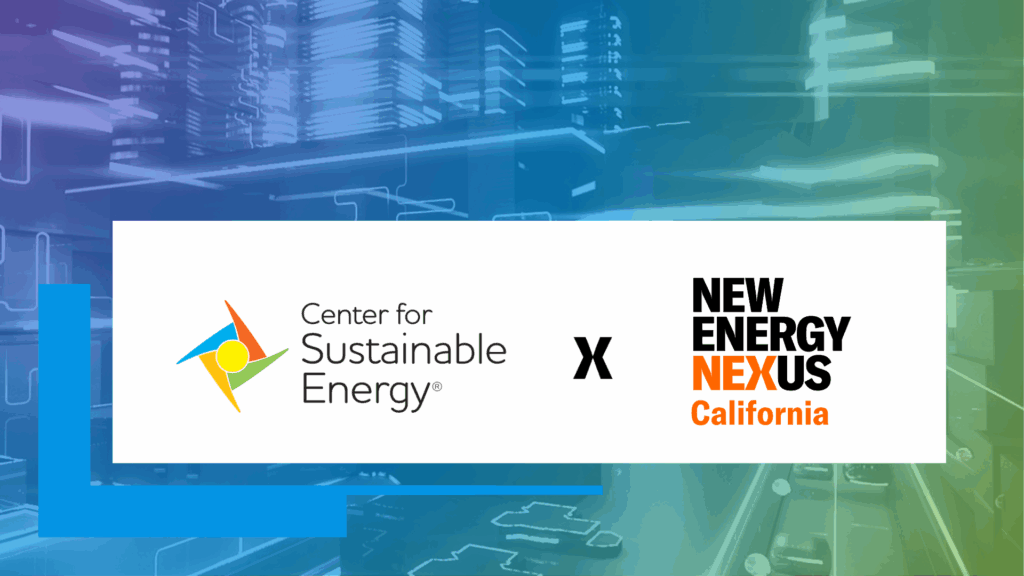
ConNEX: How to Secure and Use Alternative Venture Capital for Clean Energy Startups
Clean energy entrepreneurs are all too familiar with the constant shifts and uncertainties in the funding landscape. Recent changes in federal policy have made it more challenging for many to secure the capital needed to advance their innovations. However, many funders are still interested in backing clean energy projects.
In a virtual workshop hosted by New Energy Nexus and Momentum, experts examined the current clean energy funding landscape and offered concrete recommendations for entrepreneurs seeking to scale over the next four years, looking beyond the traditional Venture Capital landscape.
While uncertainty is everywhere, Dr. Mark Hartney from Breakthrough Energy Ventures is hopeful. It’s not his first time facing a massive shift in federal priorities. Eight years ago, he worked at Stanford on a program funded mainly by federal grants. When Trump took office, federal funding dried up, forcing them to look elsewhere and get creative, but they didn’t slow down or stop work.
“The reality is that the economic interests are all pointing towards renewables as the cheapest power we’re ever going to find. Plenty of people are looking at innovative climate solutions, whether it’s carbon capture or crop science or biotechnology,” said Hartney, “There are so many things that prevent present compelling opportunities for the future that it’s economics that drives decision-making in the real world. It’s not politics.”
So, what exactly is alternative VC? It encompasses a range of non-dilutive funding options, from federal grants and university programs to more creative VC models that offer additional support beyond just capital. Derrick Tang from the California Infrastructure Bank (iBANK) shared examples of funds like Indie VC BBG Ventues, Seae Ventures, and Unshackled Ventures, which incorporate unique features like equity buyback options and immigration support for founders.
The key advantage of exploring alternative VC is the ability to align your business trajectory with your investors’ goals and timelines. As Dave Smith from Enduring Planet emphasized, it is crucial to ensure that your funders’ return profiles and exit expectations match your company’s natural progression.
“[You need to] understand your best case scenarios, what happens if you get paid on time, but also having a deep and robust look at your financial model and understanding of what happens when you need to start cutting back,” explained Smith. “It’s much easier to find funding when you don’t have three days of runway left. Having a well-built financial and impact model is essential to be able to show investors.”
To that point, Enduring Planet has a Fractional CFO business that builds these models for startups. Enduring Planet is offering a free month of Fractional CFO services or half-off the loan origination fee to members of the New Energy Nexus network. To start the conversation, email dave@enduringplanet.com. By diversifying your funding sources, you can reduce reliance on traditional VC and access mission-driven capital that prioritizes impact alongside financial returns.
So, what can clean energy startups do to strengthen their readiness and stand out? The panelists offered three actionable steps:
- Conduct discovery on potential alternative funders. Understand their priorities, investment criteria, and sweet spots, then tailor your pitch to highlight what matters most to them.
- Build relationships with funding agencies early. Connect with program managers before solicitations are released and provide input to shape programs that fit your needs.
- Stay authentic to your mission and values. Don’t compromise your core focus just to match a funder’s preferences. When pitching, emphasize your passion and conviction.
“If you hit those points with passion and clear conviction, that will shine through,” said Tang. “And it’s similar for government grants. The earlier you get to know the people at the agency that helped make grant programs, ideally before solicitations are out, the better.”
As the funding landscape evolves, embracing alternative VC can provide clean energy startups with valuable non-dilutive support and a pathway to scale their impact.

